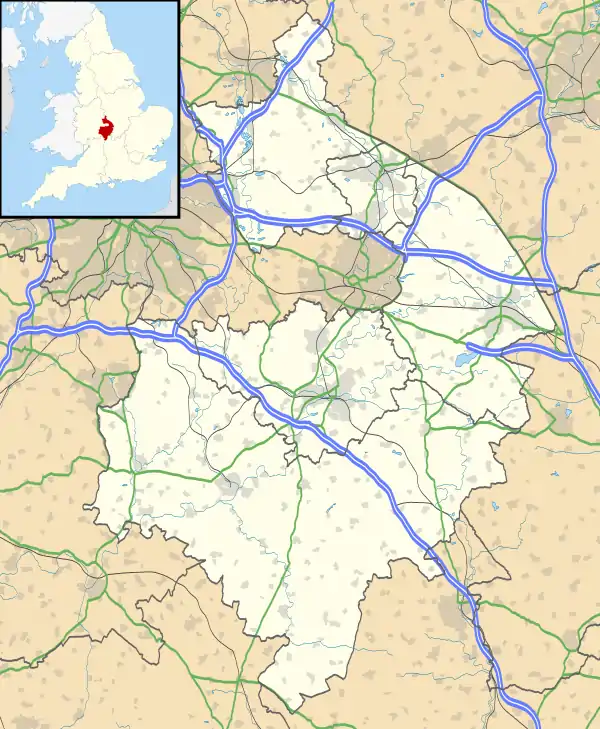Brandon, Warwickshire
Brandon is a small village in Warwickshire, England. Along with nearby Bretford, it forms part of a joint civil parish of Brandon and Bretford. Administratively it is part of the borough of Rugby. The River Avon passes just to the east of the village.
| Brandon | |
|---|---|
 War Memorial and cottages on Rugby Road, Brandon | |
 Brandon Location within Warwickshire | |
| Population | Approx 500 |
| OS grid reference | SP4076 |
| Civil parish | |
| District | |
| Shire county | |
| Region | |
| Country | England |
| Sovereign state | United Kingdom |
| Post town | COVENTRY |
| Postcode district | CV8 |
| Dialling code | 024 |
| Police | Warwickshire |
| Fire | Warwickshire |
| Ambulance | West Midlands |
| UK Parliament | |
Brandon is located upon the A428 road between Coventry, 6 miles (9.5 km) to the west, and Rugby, 6.5 miles (10.5 km) to the east.
Brandon is separated from the much larger village of Wolston by a railway viaduct, but the two villages practically form a single entity. The railway viaduct dates from 1837 and was part of the original London and Birmingham Railway, The village used to have a railway station, but this was closed in 1960. 1.5 miles (2.5 km) west of Brandon is the suburban village of Binley Woods and 2 miles (3 km) to the east is the small village of Bretford.
The village contains a number of old cottages and has a pub near the railway line. Just to the north of the village is Brandon Stadium, also known as the Coventry Stadium, which was used for speedway racing, greyhound racing, and stock car racing before being sold with the intention of house-building on the site. The stadium was home to the Coventry Bees speedway team.
West of the village is Brandon Marsh, a 228-acre (0.92 km2) nature reserve with a wide variety of wildlife, especially pondlife. The reserve's visitor centre was opened in 1998 by Sir David Attenborough. Also to the west and north of Brandon Marsh is Brandon Wood, a community woodland owned and managed by a local group the Friends Of Brandon Wood. The remains of Brandon Castle are found to the south of the village. The castle was built in the 12th century by Geoffrey de Clinton and fortified by stone a century later.
External links
| Wikimedia Commons has media related to Brandon, Warwickshire. |
- Brandon Marsh
- Brandon Wood - Brandon Wood Website